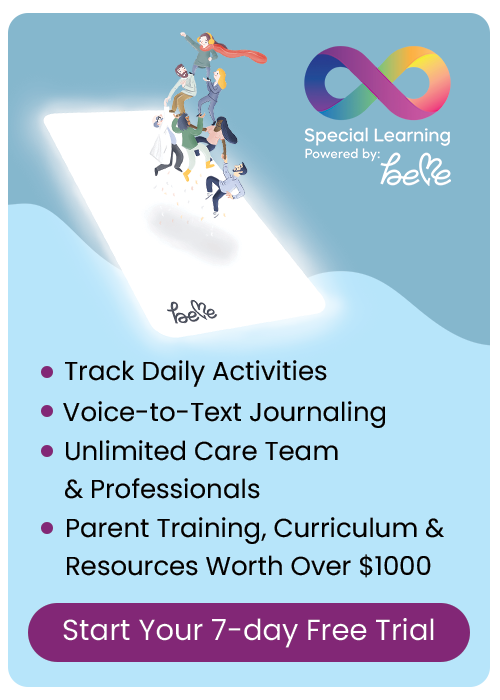Blog Categories
- ADHD
- Applied Behavior Analysis
- Autism Awareness
- Autism Service Providers
- Case Studies
- Dignosis
- Classroom Management
- Credentials
- Ethics
- Family Matters
- FAQs About LIVE Events
- Financial Planning
- Holiday Planning
- IEP's
- Panelists
- Private Equity in Autism & ABA Industry
- Psychopharmacology
- Sensory Processing Disorder
- Speech and Communication
- Subject Matter Experts
- Summer Planning
- Transition Planning
Teaching for Keeps Part 1
In each of these environments, she worked closely with parents, teachers, and paraprofessionals to develop and oversee implementation of behavior intervention plans. She has extensive experience mentoring and providing supervision to RBTs, BCBA candidates and behavior analysts. As an Associate Director of Clinical Solutions for Special Learning, she is responsible for creating and presenting educational materials and promoting Special Learning’s mission to positively impact the special needs community. She received her Master’s degree in Special Education/ABA from The Ohio State University. She has been working with in the field of ABA for over ten years.
Teaching for Keeps Part 1
As the most effective autism intervention, there are many, many aspects of Applied Behavior Analyis (ABA). Teaching for keeps, or generalization, is one of the defining characteristics of applied behavior analysis. In their seminal review of 270 published studies, Stokes and Baer (1977) defined generalization as “the occurrence of relevant behavior under different, nontraining (i.e., across settings, people, behaviors, and/or time) without the scheduling of the same events in those conditions as had been scheduled in the training conditions” (p. 350).
The term generalization is broad and can have several different meanings. Three different types of generalized outcomes include:
- Response maintenance
How durable is the behavior? Response maintenance occurs if a portion or all of an intervention has been terminated and the learner continues to perform the target behavior (e.g., learner can still make a snack without the visual schedule used during instruction).
- Setting/situation generalization
Can the learner perform the target behavior in settings/situations different from the setting/situation that instruction took place (e.g., the learner sweeps the floor in the bedroom AND living room)?
- Response generalization
Occurs if the learner can perform functionally related responses in addition to the target behaviors that were directly trained (e.g., the learner can vacuum in addition to sweeping with a broom).
Generalization is widely accepted as being important to ensure the learner reaches independence and contacts reinforcement in the natural setting. However, “train and hope” is the most commonly practiced approach, but it’s not a strategy!
Teaching sufficient examples, also called multiple exemplar teaching, is one strategy to program for generalization by teaching the full range of relevant stimulus conditions and response requirements. This includes:
- Number of items being taught (e.g., 5+3, 2+7, 9+3)
- Situations in which it’s taught (e.g., sight words and words in context)
- Setting instruction takes place (e.g., classroom, home)
- Person doing the teaching (e.g., various instructors)
The number of examples taught will vary based on the complexity of a behavior/skill, teaching procedures and tools, opportunities to display behavior, natural contingencies of reinforcement, and the learner’s reinforcement history. Teaching multiple examples does not guarantee generalization, so it’s important to keep in mind:
- The more examples used during instruction will increase the likelihood the learner will respond correctly in untrained situations.
- The learner MUST also perform the behavior with the precision required by the natural environment
- You must teach the right examples by systematically sampling a full range of stimulus variations and response requirements that the learner will contact in his/her environment.
- Teach the learner when to use the skill AND when not to use the skill
Rationale for using this strategy:
- Our natural environment is full of variability.
- You cannot directly teach every problem, every place situation, or in every location.
- To be functional, most behaviors must be acquired under various stimuli (e.g., restroom selection, credit card use).
Although ABA is highly technical intervention, with ABA training, parents, educators, professionals and others who provide care for individuals with autism can learn simple strategies and techniques to help reduce behavior and to accelerate the learning process.
Combining this strategy with other effective methods of generalization programming increases the likelihood your learner will be successful. In other words, learning multiple examples of methods of programming for generalization will increase the likelihood you will be an effective instructor!
References:
Alber-Morgan, S. (2009). Notes for a lecture on planning and implementing instruction for generalized outcomes. The Ohio State University, Columbus, OH.
Cooper, J. O., Heron, T. E., & Heward, W. L. (2007). Applied Behavior Analysis (2nd Ed). Upper Saddle River, NJ: Merrill/Prentice Hall
Stokes, T. F., & Baer, D. M. (1977). An implicit technology of generalization. Journal of Applied Behavior Analysis, 10, 349-367.
Article related to multiple-exemplar training:
Hughes, C., Harmer, M. L., & Niarhos, F. (1995). The effects of multiple-exemplar self-instructional teaching on high school students’ generalized conversational interactions. Journal of Applied Behavior Analysis, 28, 201-218




